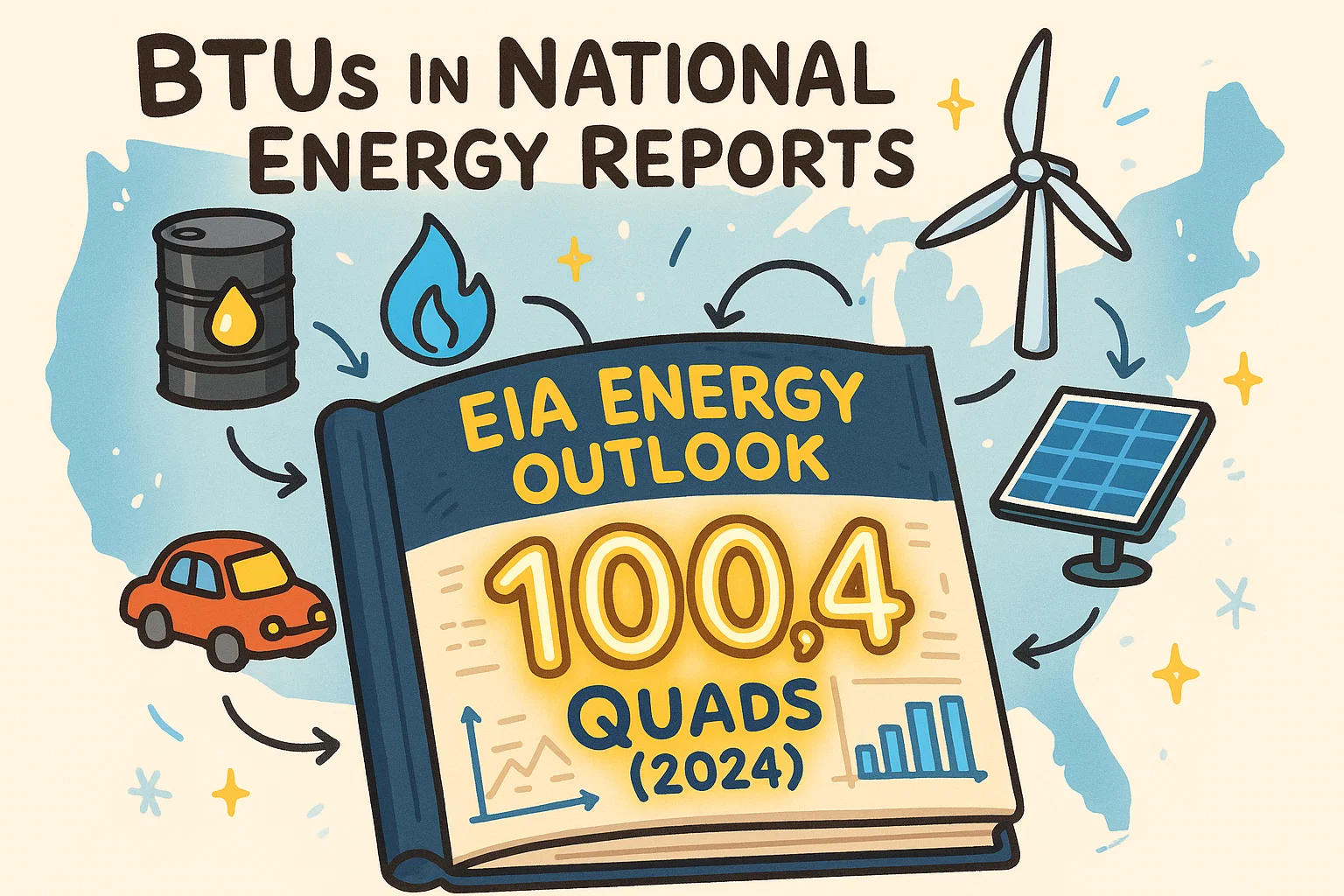When it comes to air conditioning, heating systems, and energy consumption, one term that often comes up is BTU. But what exactly does BTU mean, and why is it so important for understanding energy efficiency? In this guide, we’ll explore what BTU is, how it impacts your energy usage, and how to calculate the appropriate BTU for your space. Whether you're looking to buy an air conditioner, upgrade your heating system, or simply learn more about energy use, understanding BTUs is essential.
What is BTU?
BTU, or British Thermal Unit, is a measure of energy. Specifically, it represents the amount of energy required to raise the temperature of one pound of water by one degree Fahrenheit. This unit of measurement is used primarily in the context of heating and cooling systems to assess their capacity and energy output.
BTUs are versatile units that allow consumers and professionals to evaluate energy content in different forms. For example:
-
1 BTU = 1,055 joules
-
1 BTU = 252 calories
-
1 BTU = 0.293 watt-hours
-
1 watt ≈ 3.412 BTU per hour
These equivalencies are useful when comparing different fuels, appliances, or even measuring the energy needs of a room. It allows people to gauge how much energy a system will use over time, making it an essential part of choosing and operating efficient systems.
For quick conversions between BTUs and other units like joules or kilowatt-hours, check out our [Energy Conversion Calculator] for accurate and instant results.

BTU Capacity and Room Size
The size of your room significantly affects how many BTUs you’ll need to achieve the desired indoor temperature. The larger the room, the more BTUs are required. However, room size alone doesn’t give a complete picture. Other factors like insulation, ceiling height, and sunlight exposure also affect how many BTUs are necessary for the space.
Here’s a general BTU capacity chart to help estimate the energy needed for cooling spaces based on their square footage:
|
Area to be Cooled (sq ft) |
Capacity Needed (BTUs per hour) |
|
100 to 150 |
5,000 |
|
150 to 250 |
6,000 |
|
250 to 300 |
7,000 |
|
300 to 350 |
8,000 |
|
350 to 400 |
9,000 |
|
400 to 450 |
10,000 |
|
450 to 550 |
12,000 |
|
550 to 700 |
14,000 |
|
700 to 1,000 |
18,000 |
|
1,000 to 1,200 |
21,000 |
|
1,200 to 1,400 |
23,000 |
|
1,400 to 1,500 |
24,000 |
|
1,500 to 2,000 |
30,000 |
|
2,000 to 2,500 |
34,000 |
This chart provides rough estimates based on square footage. However, EnergyStar and other energy efficiency platforms suggest considering additional factors to refine the calculation for a more accurate result.
Before using a BTU calculator, it helps to know your room's dimensions. Our Room Size Calculator can do the math for you.
Factors Affecting BTU Usage
When calculating energy needs—especially for heating and cooling—BTU usage isn’t a fixed number. It’s shaped by multiple factors that interact with your space, environment, and lifestyle. Understanding these variables is essential to choosing the right appliance size, optimizing energy use, and ensuring indoor comfort..
Room Size and Volume
This is the most obvious and important factor. A larger space needs more BTUs to heat or cool effectively. But don’t just consider the floor area—ceiling height plays a role too. A room with vaulted ceilings may require significantly more energy than a space with standard dimensions.
Example: A 200-square-foot room with 8-foot ceilings may need around 6,000–7,000 BTUs, while a room of the same area but 12-foot ceilings might require over 9,000 BTUs.
Insulation and Building Materials
How well your home retains heat (or blocks it out) determines how hard your system has to work. Older buildings with poor insulation, thin walls, or drafty windows will lose energy faster, increasing your BTU needs.
-
Well-insulated homes can reduce heating/cooling requirements by up to 30% according to the U.S. Department of Energy1.
-
Materials like brick or concrete have different thermal retention compared to wood or drywall.
Sunlight Exposure and Window Placement
Does your room get a lot of direct sunlight? If so, it can significantly increase the cooling load. South- and west-facing rooms in the Northern Hemisphere typically absorb more solar heat, meaning higher BTU requirements for cooling.
🌞 Quick tip: A sunlit room with large windows may need an additional 10%–20% more BTUs to stay cool during summer months.
Number of Occupants
Believe it or not, people are heat sources. On average, a resting adult body emits about 400–450 BTUs per hour just from metabolic processes2.
-
A room used by many people—like a meeting room or family living area—requires more cooling capacity.
-
Add 600 BTUs per person beyond the first two, as recommended in HVAC load calculations.
Appliances and Electronics
TVs, computers, ovens, lamps, and even game consoles generate heat. When these are in use, they contribute to internal heat gain, impacting how much cooling your space requires.
🔌 Case in point: A high-end gaming PC or studio setup can generate over 1,000 BTUs per hour, the equivalent of one person’s heat output.
Climate and Outdoor Conditions
Where you live affects your BTU needs. A home in Florida or Arizona will need much higher cooling BTUs than one in Minnesota or Maine. Similarly, extreme cold zones require greater heating power.
Room Usage and Function
The purpose of the room plays a role too:
-
Kitchens need more cooling due to stoves and ovens
-
Basements may require less cooling but more heating
-
Home gyms need more cooling to offset body heat during workouts
Airflow and Ventilation
If a room lacks proper ventilation or has limited airflow, the cooling or heating system has to compensate more, increasing BTU demand. Using fans, ducts, and vents strategically can improve efficiency and reduce overall energy use.
Floor Level and Location Within the Building
Heat rises. So upper-floor rooms in multi-story homes generally need more cooling BTUs, especially during summer. Conversely, basements tend to stay cooler but may need more heating during winter.
Environmental and Energy Policy Context
While the BTU may seem like just another technical term, it plays a central role in how energy is tracked, regulated, and planned at the national level—especially in the United States. From annual government reports to environmental policy frameworks, BTUs are the language of energy accountability.
BTU in National Energy Reports
Government agencies like the U.S. Energy Information Administration (EIA) use BTUs as the standard unit for measuring energy across all sectors—residential, commercial, industrial, and transportation. The Annual Energy Outlook published by the EIA provides projections and analyses based on quadrillion BTUs (also known as quads), which serve as macro-level indicators of national energy trends3.
For example, in the EIA’s 2024 report, total U.S. energy consumption was estimated at around 100.4 quads, with petroleum and natural gas making up the majority share1. These figures help policymakers, researchers, and private companies anticipate shifts in energy demand, pricing, and environmental impact.

BTU as a Benchmark for Fossil Fuels
Each type of fuel has a distinct BTU rating, which allows for apples-to-apples comparison of their energy content. Here’s how a few common fuels stack up4:
|
Fuel Type |
Approximate Energy (BTU per unit) |
|
1 gallon of gasoline |
~120,000 BTUs |
|
1 cubic foot of natural gas |
~1,037 BTUs |
|
1 ton of coal |
~20 million to 30 million BTUs |
These values are critical for both energy policy and commerce. For example, utility companies rely on BTU ratings when converting natural gas usage to equivalent dollar values for consumer billing. Environmental regulators use them to assess the carbon emissions intensity of each fuel type, enabling more accurate tracking of pollution across industries.
BTU and Carbon Footprint Calculations
BTUs also serve a key role in determining a system’s or product’s carbon footprint. The U.S. Environmental Protection Agency (EPA) and other global organizations often tie CO₂ emissions estimates to the energy used, which is typically measured in BTUs. For instance, the EPA estimates that burning 1 million BTUs of coal produces approximately 210 pounds of CO₂, while the same amount of natural gas emits only about 117 pounds5.
This framework allows businesses and governments to:
-
Set emissions reduction goals
-
Compare the efficiency of different energy sources
-
Develop greener alternatives for heating, cooling, and transportation
With the rising importance of sustainable energy practices, having tools that work directly with BTUs—such as a BTU calculator—empowers users to make data-driven decisions not just at home, but also within broader environmental efforts.
- U.S. Department of Energy. (2023). Insulation and Air Sealing.
-
U.S. Environmental Protection Agency. (2023). Building Air Quality Guide.
-
U.S. Energy Information Administration. (2024). Annual Energy Outlook 2024.
-
U.S. Department of Energy. (2023). Energy Units and Calculators Explained.
-
U.S. Environmental Protection Agency (EPA). (2023). Greenhouse Gas Equivalencies Calculator.

